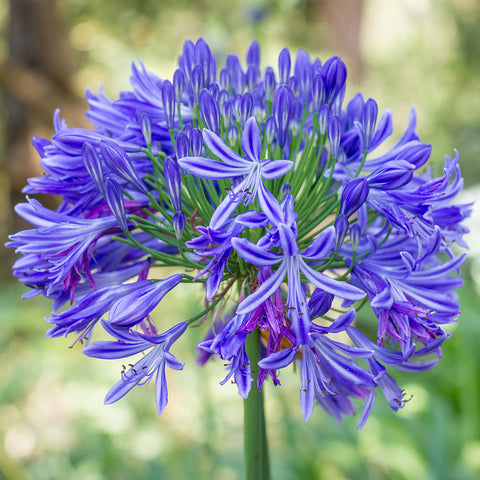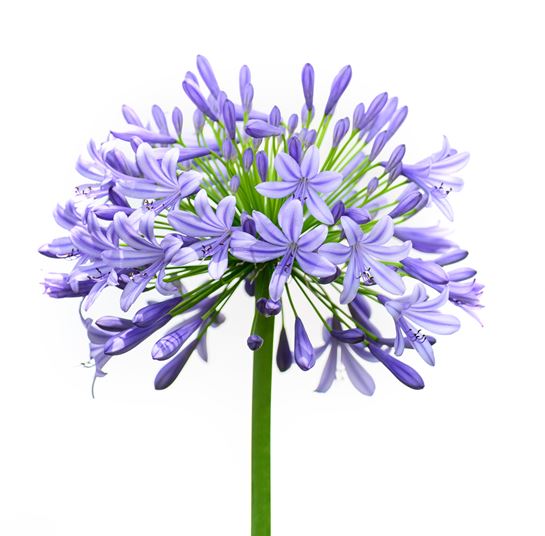Seasonal Agapanthus Treatment: Planning For Wintertime and Summer season
Seasonal Agapanthus Treatment: Planning For Wintertime and Summer season
Blog Article
Grasping the Art of Agapanthus Care: Essential Actions for Healthy Development and Lively Blossoms
In the realm of horticulture, the growing of agapanthus stands as a satisfying venture for those that look for to support these stylish flowering plants. With their striking flowers and elegant vegetation, agapanthus has actually captured the attention of gardeners worldwide. However, attaining optimal growth and vivid blossoms requires a nuanced approach that includes different essential actions. From picking the appropriate variety to understanding trimming strategies, the trip towards cultivating flourishing agapanthus plants is complex and holds the vital to unlocking the complete possibility of these botanical treasures.

Selecting the Right Agapanthus Selection

When selecting the best Agapanthus selection for your garden, take into consideration aspects such as climate suitability, blossom color, and development habit. Agapanthus, typically called Lily of the Nile or African lily, is available in a range of shades varying from tones of purple and blue to white. Pick a blossom shade that matches your existing garden combination to produce an unified landscape. Additionally, think about the climate in your region to ensure the Agapanthus variety you select can flourish in your particular problems. Some ranges are more tolerant of cold temperatures, while others favor warmer climates. Recognizing the growth habit of different Agapanthus ranges is crucial for correct placement within your yard. Some selections have a clumping growth habit, perfect for containers or borders, while others have a more spreading nature, appropriate for ground cover or mass growings. By very carefully evaluating these elements, you can pick the excellent Agapanthus variety to enhance the appeal of your yard.
Ideal Planting Problems
Considering the optimal ecological demands is vital for effective Agapanthus cultivation. Agapanthus plants are sensitive to chilly temperature levels and should be secured from frost during winter season months.
To make certain healthy and balanced development and vivid flowers, plant Agapanthus light bulbs at a deepness of about 2-4 inches and room them 8-12 inches apart. Mulching around the base of the plants helps maintain moisture and reduces weed development.
Watering and Fertilizing Tips
Keeping proper dampness levels and offering important nutrients are crucial elements in the treatment regimen for Agapanthus plants. When it comes to watering Agapanthus, it is crucial to strike a balance. These plants favor constantly moist dirt however are at risk to root rot if overwatered.
Fertilizing Agapanthus is important for advertising healthy growth and respected blossoms. Use a balanced plant food, such as a 10-10-10 formula, in the early springtime as brand-new development emerges. By following these watering and feeding pointers, you can ensure your Agapanthus plants grow and produce dynamic, long-lasting blooms.
Pruning Methods for Agapanthus
Pruning Agapanthus plants at the suitable times and with correct strategies is important for preserving their wellness and promoting optimal growth and blooming. The perfect time to trim Agapanthus remains in late winter or early spring before brand-new development emerges. Start by removing any yellowing or dead leaves near the base of the plant. Cut them as close to the ground as possible without harming the arising shoots.
Deadheading invested blossoms can likewise redirect the plant's power right into generating more flowers rather than setting seeds. If you helpful site desire to accumulate seeds for breeding, leave some blossoms to dry and mature on the plant.
Keep in mind to use clean, sharp tools to make exact cuts and decrease the danger of presenting illness. Agapanthus. Regular trimming will certainly aid maintain your Agapanthus looking neat and healthy and balanced while making certain a plentiful screen of stunning blooms
Handling Common Bugs and Diseases
After ensuring appropriate trimming techniques for Agapanthus, it is essential to attend to common bugs and diseases that can influence the wellness and vitality of these plants. One typical parasite that influences Agapanthus is the Agapanthus gall midge.
An additional usual problem is fungal leaf area, which presents as dark sores on the fallen leaves. To stop fungal illness, make sure great air blood circulation around the you could try this out plants, avoid above watering, and get rid of any contaminated leaves without delay. Furthermore, Agapanthus plants can struggle with origin rot if they are planted in badly draining pipes dirt. To avoid this, plant visite site Agapanthus in well-draining soil and prevent overwatering. By being alert and taking prompt activity versus diseases and bugs, you can help your Agapanthus plants thrive and generate vibrant blooms.

Verdict
In conclusion, understanding the art of agapanthus care entails choosing the appropriate variety, providing excellent planting problems, correct watering and feeding, ideal pruning strategies, and addressing typical bugs and illness. By complying with these crucial actions, you can make sure healthy and balanced development and lively flowers for your agapanthus plants. Bear in mind to regularly check and keep your plants to promote their general well-being and longevity.
To ensure healthy development and vivid flowers, plant Agapanthus bulbs at a deepness of regarding 2-4 inches and room them 8-12 inches apart. By following these watering and fertilizing suggestions, you can ensure your Agapanthus plants thrive and create vibrant, long-lasting blooms.
One common insect that impacts Agapanthus is the Agapanthus gall midge. Furthermore, Agapanthus plants can endure from root rot if they are planted in inadequately draining dirt. By following these vital actions, you can make sure healthy growth and vivid blossoms for your agapanthus plants.
Report this page